
Become a member
Join today and help protect nature, beauty and history – for everyone, for ever. Enjoy access to more than 500 places with National Trust membership.
Ancient royal hunting forest
Bush End Road, Takeley, Bishop's Stortford, Essex, CM22 6NE

| Asset | Opening time |
|---|---|
| Forest | Dawn - Dusk |
| Entrance car park | 09:00 - 14:30 |
| Elgins car park (Grass Car Park) | Closed |
| Shell house car park | 09:00 - 14:30 |
| Café | 09:00 - 15:00 |
Please note that Forest access is pedestrian access only outside of car park opening times. Car park closing times shown are ‘time of last entry’. Once parked, cars are permitted to remain on site until dusk.
| Ticket type | With Gift Aid | Without Gift Aid |
|---|---|---|
| Non-member Car | £9.00 |
Our second-hand books are found in the lake area hub
Our cafe has no indoor seating, but there's plenty of picnic tables in the lake area to enjoy your tasty treats.
We have three car parks in the Forest. If you want to be close to the facilities head to the Shell House car park near the lake. If you're looking for a summer picnic and games you might like Elgins car park in the middle of the Forest on the other side of the lake. Or there's always the main entrance car park.
Dogs are welcome across the Forest. We ask you check out our Doggy Dos and Don'ts for further information, but please put your dog on a lead near our livestock, thank you.
The closest electric charging points at in the M11 junction 8 services CM23 5QZ or Stansted airport CM24 1QJ
Toilets are found next to the cafe in the lake area.
Blue Badge parking and drop-off point. Accessible toilet. Poor phone signal. Some uneven routes. Shell House accessible with assistance.
There is an accessible toilet in the lake area
There are designated accessible parking spaces in the Shell House car park near the lake and in the main entrance car park
There are some boardwalks and it is possible to walk on the road through the Forest.
There is a PMV available on request. Please contact us in advance at hatfieldforest@nationaltrust.org.uk to reserve it for your visit.
Some of our picnic tables have wheelchair accessibility
Some of the terrain in the wider Forest is uneven due to being muddy in the winter months and the yellow meadow ant hills.
Please contact us in advance at hatfieldforest@nationaltrust.org.uk to reserve it for your visit.
Bush End Road, Takeley, Bishop's Stortford, Essex, CM22 6NE
Immerse yourself in nature at Hatfield Forest and take part in outdoor wellness activities, or experience the magic of an outdoor performance as the sun sets under the stars. Discover the exciting activities you can participate in during your visit to the forest.
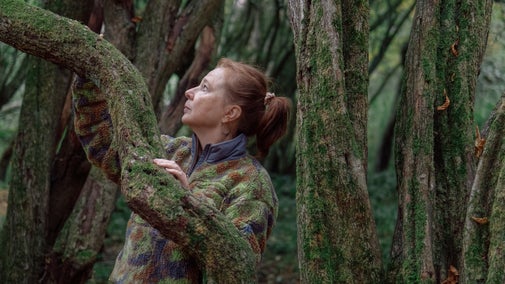
Hatfield Forest is a woodland property with only limited hard surfaces in the central lakeside area. This is next to the main car park, with designated parking spaces. The central area has a visitor hub, an accessible toilet and baby changing facilities and an accessible outdoor cafe. Beyond this central area, the ground can be uneven and rough and gets very muddy and waterlogged in winter.
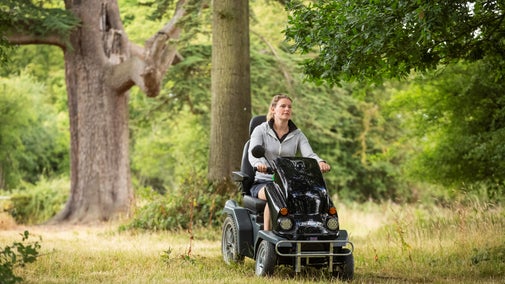
Hatfield Forest is a two pawprint rated place. It's a perfect place for walking your dog, with 1,000 acres of woodland and open grassland to explore, trees to sniff and grass to roll around in. Professional dog walkers will need a National Trust license to walk a maximum of 4 dogs, up to three times a day.

We are delighted that you can now book facilitated school visit with our delivery partners, the Wilderness Foundation, so head to their website to find out more. If you'd like to book a self-led visit, please email hatfieldforest@nationaltrust.org.uk.

Jacob Houblon commissioned Capability Brown to design this 18th-century pleasure ground with lakes and open picnic areas.
This ornate Georgian pavilion was built for entertainment in the 1750s and the shell decorations were designed by 15-year-old Laetitia Houblon.
With views of the lake, serving a variety of lunches, snacks, savouries, sweet treats, hot and cold drinks. Outdoor seating only.
Located within the Lake Area, with property information, second-hand books and seasonal activities.
Traditionally managed coppice woodland and historic rides featuring rare wildlife and the wild fallow deer herd.
A working landscape of grass plains, seasonally grazed by cattle and with an important population of veteran trees and associated wildlife.
Portingbury Hills and The Warren are visible manmade earthworks made up of banks and ditches, and both of historic significance.
Immerse yourself in the beauty of the Forest with transformative experiences that restore balance and deepen your connection with nature.

Join us for an hour long, gentle walk around the enchanting Hatfield Forest. Running on alternate Wednesdays and Fridays, everyone is welcome on our walks for wellness. Breathe the fresh air and move your body whilst connecting with nature in this beautiful setting. Make it as peaceful or sociable as you like.
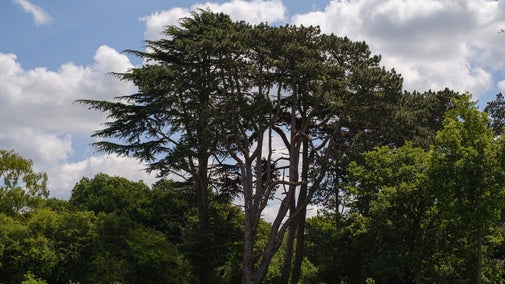
Discover what there is to do for families at Hatfield Forest, including spaces to explore and activities to keep kids entertained.

Visit a royal medieval hunting ground with mighty ancient oaks, fallow deer and wildlife aplenty. Enjoy a walk followed by a treat from the Forest Café in the beautiful surroundings of the Georgian lake and Shell House.

Hatfield Forest is home to an established population of both fallow and muntjac deer. Visit the coppices to see how many you can find.

Discover a range of outdoor activities at Hatfield Forest in Essex. From short to long walks, running routes, horse riding and fishing, there's something for everyone.

An easy 1.7-mile circular walk through the ancient woodlands at Hatfield Forest, a Site of Special Scientific Interest and National Nature Reserve.

Enjoy the splendour of a medieval hunting forest, passing through ancient trees on the Hatfield Forest and Flitch Way walk.

Explore the idyllic Essex countryside with this 9.5-mile (15.3km) walk from the old railway station in Takeley to the ancient Wall Wood, and back again.

Discover a 1000-year-old maple tree, a mighty cedar, and Capability Brown's parkland plan on this gentle circular stroll around the historic Hatfield Forest, suitable for the whole family.

Discover how the Houblon family turned Hatfield Forest into a Georgian pleasure ground with the help of the famous 18th-century landscaper Capability Brown on this circular trail around the lake.

In May and June, the plains at Hatfield Forest are turned into a sea of gold by over 300 million buttercups. It's the perfect time to enjoy this 3.4-mile walk.

The café at Hatfield Forest has views across the lake. You can also buy venison and firewood from the Estate Office when in season.

Join us for an hour long, gentle walk around the enchanting Hatfield Forest. Running on alternate Wednesdays and Fridays, everyone is welcome on our walks for wellness.
A relaxing breathwork class, designed to calm the nervous system, clear tension from within and provide space to connect back to the mind, body and soul.
Join Hannah from Rainbow Relaxation in the Forest setting for a workshop based around yoga and mindfulness in nature.
Hatfield Forest National Nature Reserve is the best surviving example in Britain of an almost complete Royal Hunting Forest. It has seen many owners, from Kings to commoners. No other Forest on earth evokes the atmosphere of a medieval hunting Forest so completely.
Hatfield Forest is a managed landscape, which has been created by centuries of human intervention. The traditional woodland management techniques of coppicing, pollarding and grazing are continued today. It is home to over 3,500 species of wildlife, some of which are rare and threatened. The ancient trees, some over 1000 years old, provide the perfect habitat for some of the Forest's rarest insects, lichens and fungi.
Whether you want somewhere for the children to run off energy or a place for quiet reflection, you will find your own special place in Hatfield Forest.
In the winter, to reduce damage to the Forest, car parking is limited to the hard standing area only. The car parks will be closed when they reach capacity.
Find out about some of Hatfield Forest's rich and varied history, including how the original royal hunting forest was created and then, later, how Lancelot 'Capability' Brown left his mark.

A number of individuals and families have played a prominent part in the history of Hatfield Forest. Read more about these people and how they helped form the place we see today.

Hatfield Forest is a living record of nearly a thousand years of continuous management, and today it remains one of the most ecologically rich landscapes in lowland Britain. To safeguard this unique biodiversity, a programme of ecological monitoring is carried out across the Forest. From veteran trees and ancient wood pasture to rare ground flora and diverse insect populations, monitoring helps us understand how the ecosystem is changing over time, assess the impacts of management, and ensure that conservation actions are evidence-led.
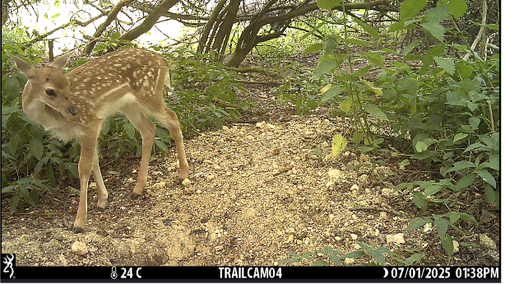
Hatfield Forest National Nature Reserve, managed by the National Trust, is celebrating its best butterfly season in nearly two decades. With 24 species recorded and notable increases in marbled-white, small heath, and purple emperor butterflies, the success is credited to changes in grassland management, delayed mowing, and winter grazing by Red Poll cattle. Long-term monitoring data, supported by volunteers, feeds into the UK Butterfly Monitoring Scheme, highlighting how small habitat changes can have a major impact on biodiversity.
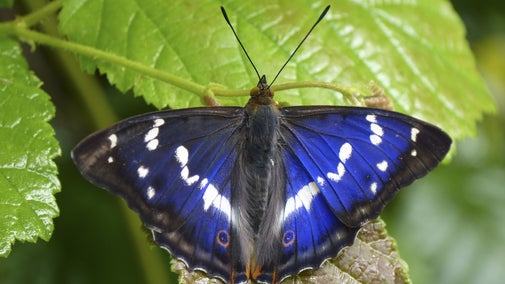
In 2024 Essex Cultural Diversity Project and the National Trust invited proposals for a creative project to mark the 100th anniversary of the gifting of Hatfield Forest to the National Trust, which would celebrate this unique and vulnerable ancient site, and help articulate the importance of philanthropy, acts of kindness and calls to action that enthuse and inspire us to all care for the environment and our communities. Kirsty and Wayward’s project, A Common Way looked to extend Hatfield Forest’s hundred-year-old act of care and community into today’s local landscape, harnessing the power of queer ecofeminism, an ideology that aims to break binaries and acknowledge the diversity of the natural world and humanity’s connection with it.
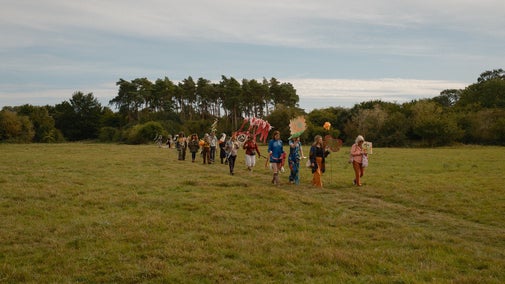
Learn about how the team at Hatfield Forest continue to look after this special place for everyone, for ever.
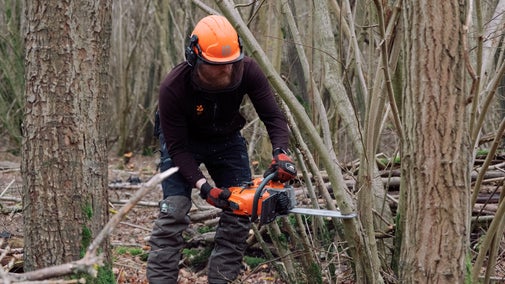
Search for live volunteering opportunities, or register your interest with Hatfield Forest.


Join today and help protect nature, beauty and history – for everyone, for ever. Enjoy access to more than 500 places with National Trust membership.
By sharing your email address you’re agreeing to receive marketing emails from the National Trust and confirm you’re 18 years old or over. Please see our for more information on how we look after your personal data.